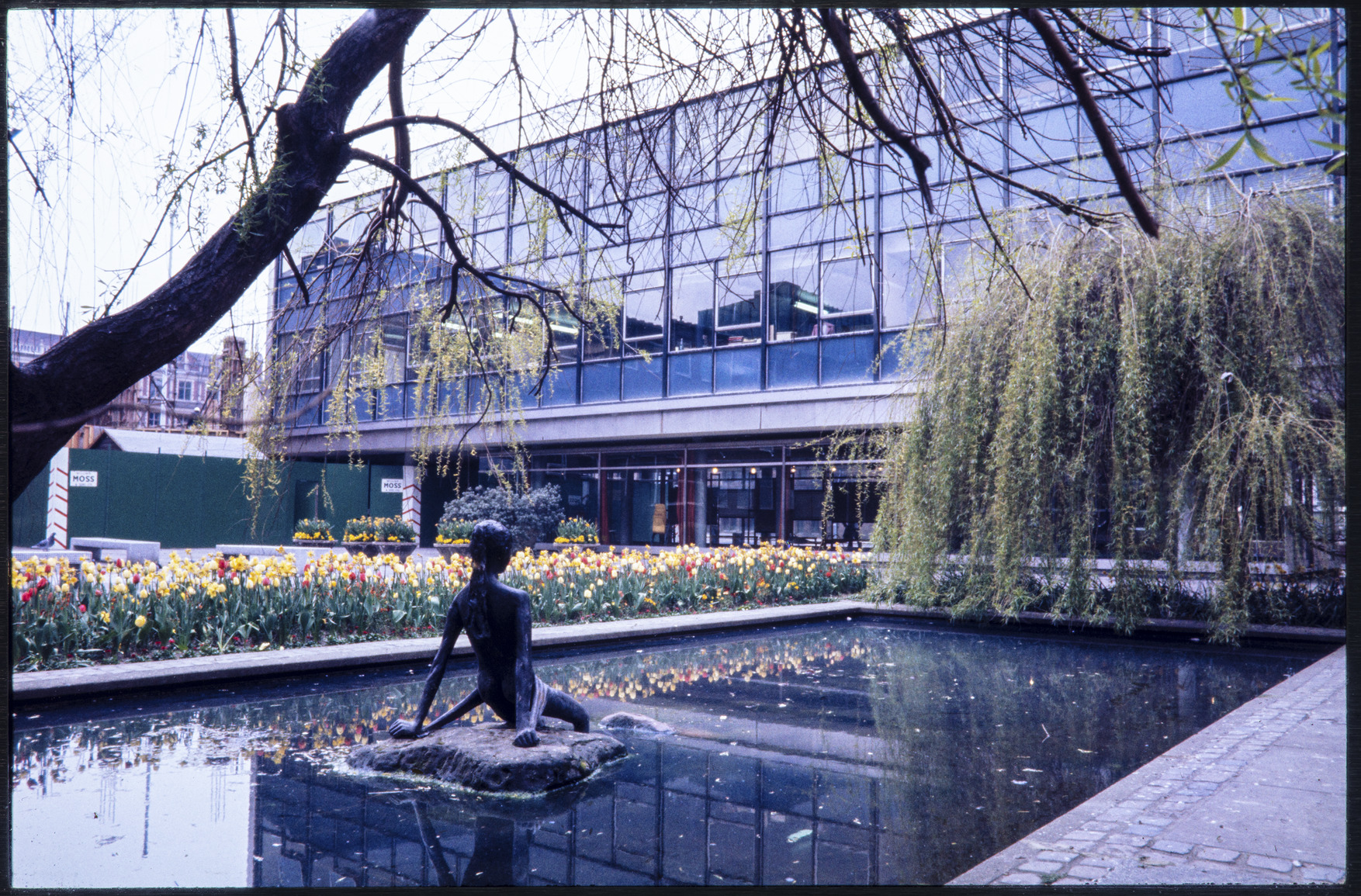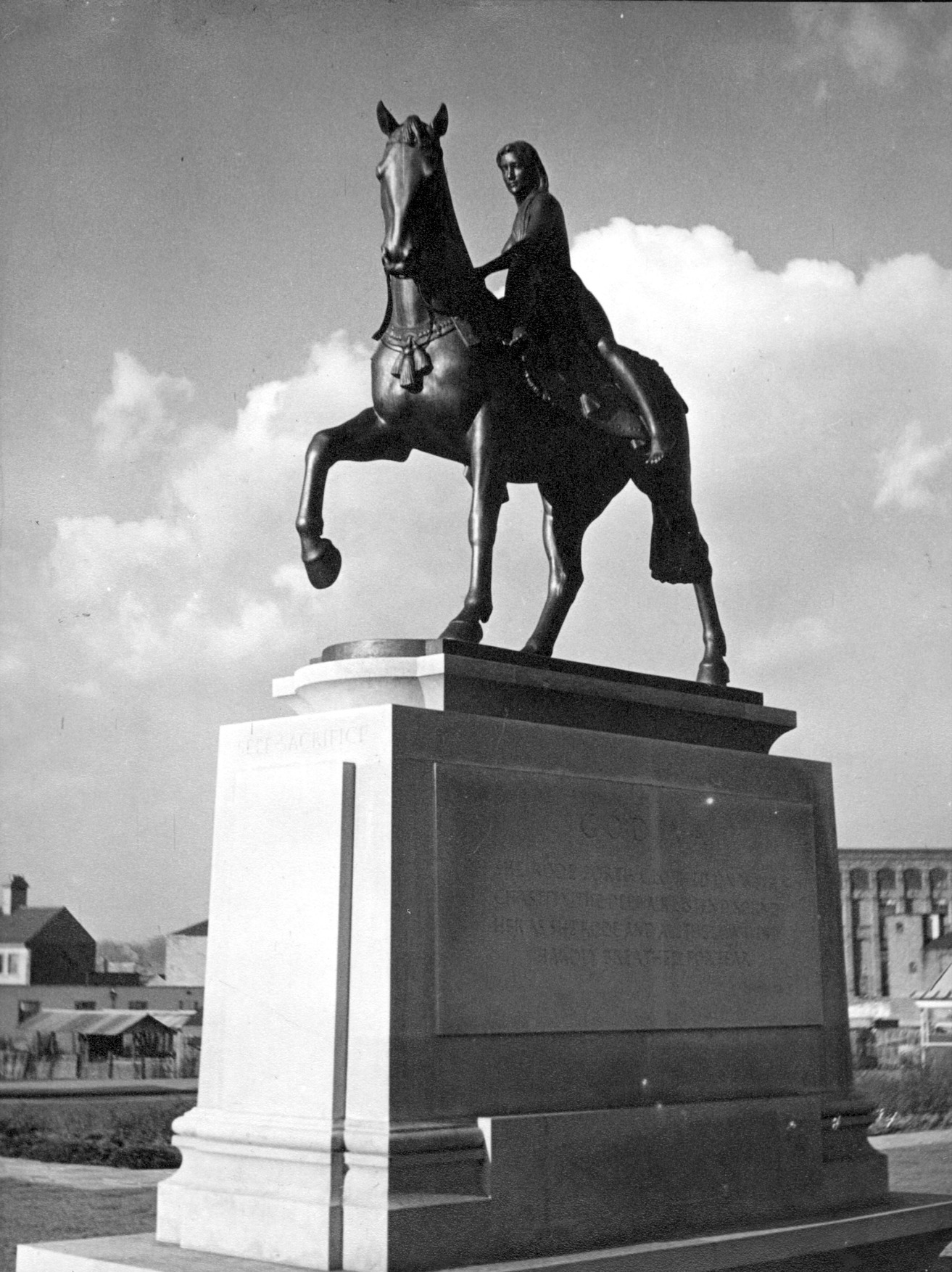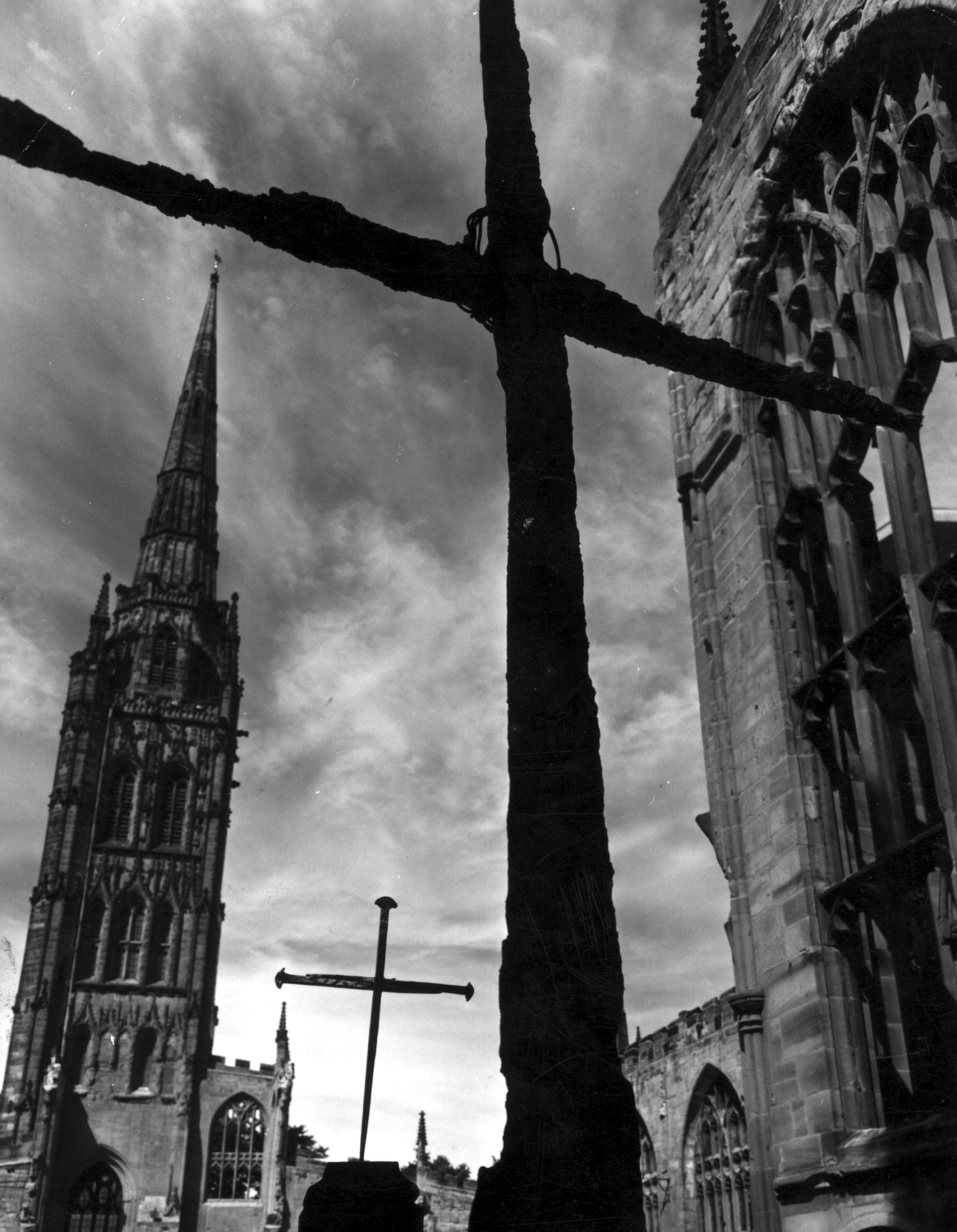Art and Vandalism: Destruction, Protest or Creative Reinvention?
22 September 2022
With Ali Cherri's current exhibition, "If you prick us, do we not bleed?" drawing inspiration from vandalised artworks, we've been considering the relationship between art and vandalism. In our latest blog, Archives Assistant Harriet Davidson reflects on where we draw the lines between destruction and reinvention, political protest and creative expression through a series of examples from Coventry's history.

Vandalism – “Action involving deliberate destruction of or damage to public or private property”
Vandalism and art are no strangers. In some cases, some ‘art’ is considered ‘vandalism’. For example, the work of Banksy still divides opinion as to whether their work is a clever social commentary which boosts the fortunes of the communities in which the work pops up or whether they are just another vandal defacing buildings and causing chaos. Additionally, ‘vandalism’ of art in other ways can be used as a form of protest. Recently, members of the Italian environmental activist group Ultima Generazione have made headlines by gluing their hands to a 15th century painting by Sandro Botticelli in the Uffizi Gallery, while in the UK, members of Just Stop Oil covered Constable’s The Hay Wain with a reimagined dystopian scene and glued themselves to the frame. There is also the type of vandalism which is just destruction for the sake of it.

Over the years, Coventry has experienced, and undertaken, action that could fall into all of these categories. The artwork which has sustained the most abuse is George Wagstaffe’s Naiad (pictured above). Originally installed outside the Architects' Department in Earl Street in 1961, this sculpture of a female figure has several times suffered the indignity of being ripped from her seat and thrown into the water. She has also been smashed to such an extent through being stoned, that in 1976, she was eventually taken off display and later replaced. She is currently back on display in the new water feature of the redeveloped Upper Precinct.
In 1989, a mural depicting Coventry’s industrial heritage was commissioned for the hoardings around West Orchards shopping centre. While the artist, Angie Murphy, was still working on the piece, the plastic booth which was covering the work, and in which the artist sat to paint, was set on fire by vandals twice. Luckily, the mural was unharmed, but these attacks did disrupt the work's creation.
Broadgate's iconic Lady Godiva statue (left) has also been a victim of vandalism. Over the years, she has been defaced by graffiti, some of which was protesting against the Iraq War in 2002. Given that Coventry is known as a ‘City of Peace and Reconciliation’ and Lady Godiva is famed for taking a stand against injustice, using her statue as a canvas for anti-war protest might be said to be quite fitting. On the other hand, when there are so many other ways to protest, is damaging art ever justified?
From the pointless and protesting to the preposterous: In 1998, the Coventry Evening Telegraph reported that a Coventry University art student had been jailed for 4 months after ‘daubing’ a £60,000,000 Rembrandt painting in the National Gallery in a bid to further their campaign to legalise nudity. The work of Rembrandt they chose was a self-portrait of the artist at 63. To my mind, it's a strange choice of painting, as there is no obvious relationship between the artwork and the cause behind the protest, in contrast to the Just Stop Oil group, for example, whose targets included landscape paintings, in order to emphasise the crisis of our changing environment.
 In Coventry, we can also look at the idea of vandalism on a much larger scale. Before World War II, Coventry was a city full of medieval architecture, but in November 1940 and again in April 1941, many of its older buildings were damaged or destroyed in air raids, and the Blitz could be said to be one of the biggest acts of vandalism in the city's history.
In Coventry, we can also look at the idea of vandalism on a much larger scale. Before World War II, Coventry was a city full of medieval architecture, but in November 1940 and again in April 1941, many of its older buildings were damaged or destroyed in air raids, and the Blitz could be said to be one of the biggest acts of vandalism in the city's history.
Dresden in Germany suffered a similar level of destruction to Coventry, but the two cities responded very differently. In Dresden, the decision was made to rebuild what had been lost in keeping with the original architectural style, whereas Coventry opted to strive for Modernism and a clean slate by adopting the new architectural style of Brutalism.
Among the buildings which suffered heavy damage in 1940 was Coventry Cathedral, which was hit by incendiary bombs that destroyed its roof and interior. However, as well as building a new Cathedral in a more modern style, Coventry chose to preserve the ruins of the old church beside it, and since then, they have been used as space for reflection, art and performance. This decision is significant because it has transformed a story of terrible loss and destruction into one of hope and rebirth. The burnt cross which was made from the charred remains of the old Cathedral the morning after the Blitz is displayed in the ruins as a powerful symbol of the city rising like a phoenix from the ashes: the ultimate case of art triumphing over vandalism.
Ali Cherri's "If you prick us, do we not bleed?" is free to visit until 8 Jan 2023. Find out more.